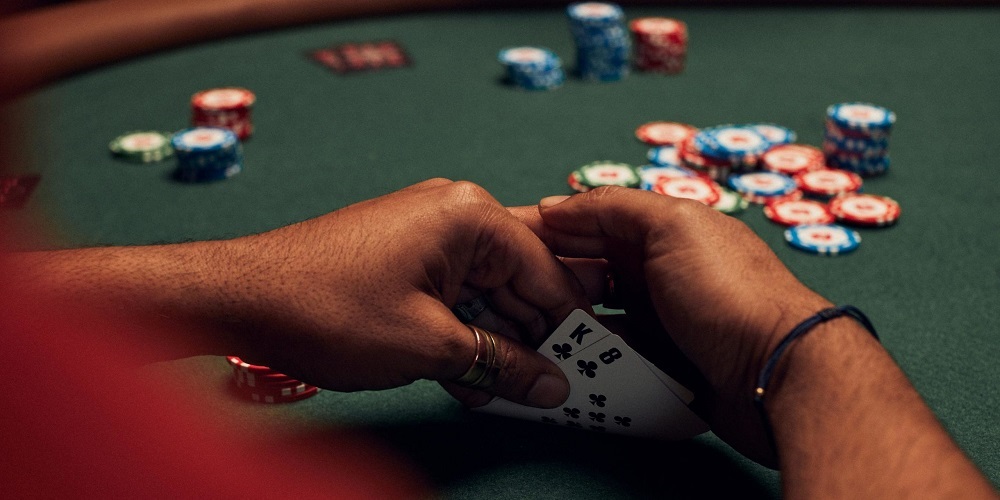Professionalization in poker inevitably entails the use of concepts and anglicisms whose meaning determines a specific action or intention. Their use is generalized in all modalities, being in Pot Limit Omaha High-Low frequent as well.
Something as simple as going for the pot has its own designation, and in this article, we will focus on two very common concepts in PLO High-Low: scooping and quartering.
Scooping in Omaha poker: what is it?

Scooping in poker is something very common; in fact, it is the ultimate goal of every player who wants to win the pot. When we mean that a player goes for the whole pot, we say that he is scooping. It is a term that appears in the poker glossary of any variant and modality, although it is especially common in Pot Limit games.
The objective of PLO High-Low is to go for the whole pot. This is called scooping. However, in Omaha poker it is common to see that we lose money having options to win hands. And it is not a one-time occurrence, this happens more often than many would like. The best thing to do is to avoid playing hands in which we do not have a total guarantee of winning. Most of the time, getting back the money we have bet pays off, even if we don’t win anything, since we avoid falling into losses.
If we are going to go for the pot, with the nut de low on the floor, it will compensate us to throw away the cards and stay out. Why? Remember that the objective is to scoop, that is to say, to win the whole pot. And this, if we do not have the nut de low, we will hardly achieve it. Keep in mind that Omaha is, in essence, a game of nuts, and to scoop we have to play with cards that give us the possibility of having the nut low as well as the nut high.
Of the poker terms that we have to be clear when playing PLO High-Low, quartering is perhaps the most important. By inertia, many tend to play hands with less guarantees than they need to win the whole pot, and end up losing money with a good hand. This is something we have to avoid.
Meaning of “quartering” in poker

Quartering is another of the anglicisms included in our everyday poker vocabulary. If to scoop in poker is to go for the whole pot, quartering refers to the splitting of the pot in case of a tie. This is especially common in split games, where more than one hand is played at a time. Two, in this case, and different pairs of one’s own cards can be used to play one hand or the other. Each of the hands takes half a pot.
Does this always happen? No, because there is always a better hand, but for there to be a lesser hand a series of requirements must be met: the player must have 5 cards of less than 8 value and unpaired in order to be able to form it. If there is no lowest hand, the best hand wins the pot. But what happens when two or more players tie on the same hand? It doesn’t matter if it is the best or the lowest hand. In this situation, it is dealt again and each hand is eligible to take a quarter of the pot. Hence the term “quartering”.
To put it more simply: half of the pot goes to the higher hand, and the other half to the lower hand. Since it is a high-low game, you work with these two hands. But it happens that two players have tied on, for example, the lowest hand. In this case, the player who has tied the best hand takes 50% of the pot, and the players who have tied take half of that half, i.e., 25% of the total pot.
How to avoid being “quartered” in Pot Limit Omaha High-Low

A terrible way to avoid taking a large sum of money is for a player to force us to be quartered. It is something more common than it seems, and it is advisable to be forewarned in order to avoid being in a tight spot at the very first moment.
The first important point: the preflop hand. During the flop there may appear indicators that they are trying to “quarter” us, so we must know how to read the game well to avoid it or, at least, be aware of what they are doing with us, since it is not always possible to avoid being quartered.
Preflop, we must keep a close eye on all hands that have two low cards and no support at the bottom of the pot. Almost always, a pair of low cards is a nuisance in PLO High-Low, so beware.
An indicator that they are trying to quarter us is that they encourage multi-way pots at the end of the flop. We can be in trouble if we draw with a low hand and two opponents raise and re-raise. This is going to cost us dearly if we don’t get out of the pot soon.
So how can we avoid getting quartered? By avoiding playing against opponents who have low pair hands, especially if we don’t have the nut. And, if we have identified it late and they re-raise in the pot and we have kept our low card pair, it is important to get out of the pot as soon as possible to reduce damage.
Some digital tools can be very helpful. The use of specialized software can allow you to stay ahead of your opponents and only get into the pot when there is no sign of danger. However, their use is limited, so it is not always possible to count on this resource.

